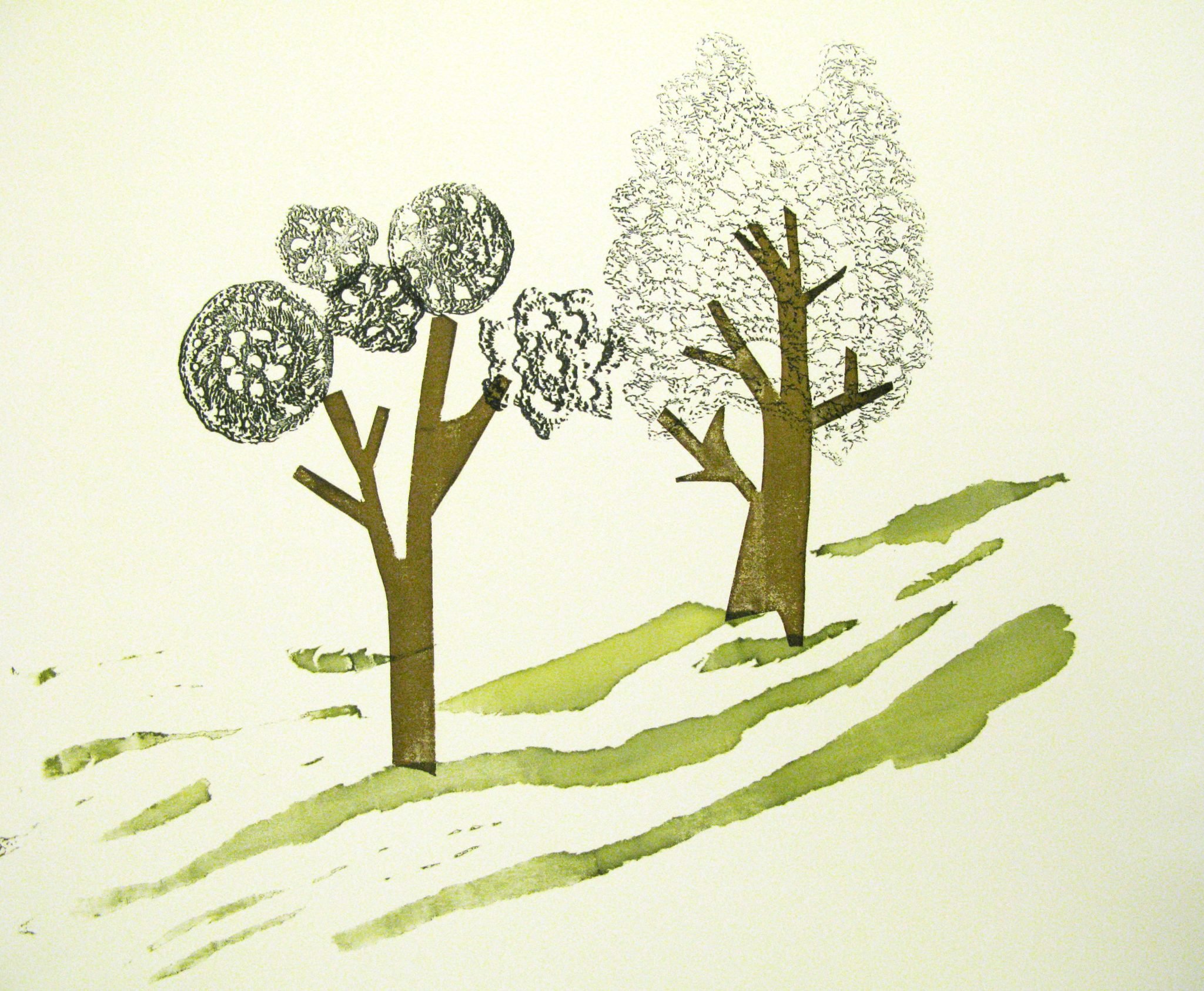Vitreography - 1993 Harvey Littleton interview by Mildred Thompson
Needlework Park, 2008. Traditional screenprint by Kathleen James
In 1993, Mildred Thompson worked as a guest artist in the Spruce Pine, North Carolina studio of glass artist Harvey Littleton. Her interview with him was published in in Art Papers, January/February 1994, Vol. 18, p2-5, 4p.
In the wide-ranging interview, they discussed many topics but vitreography (using glass as a printing plate) caught my attention. This was mainly because we have learned many techniques for working with glass at University, but making vitreographs isn't one of them so far. That's probably because it's almost exactly the reverse of what our course is about. In vitreography, glass is used as a printing plate in the same way as a stone is used in lithography. So far, the course has been more about using glass and clay as both the medium and the end result of the process. This intrigued me - I spent 24 weeks at art college making prints using various methods but vitreography never came up there, either.Littleton explained that using glass as a printing plate had its origins around the time of the Great Exhibition in London in 1851. The goal was to find a long-lasting method of printing paper money, where the plates didn't degrade over time. It was reasonably successful but very dangerous. Hydrofluoric acid was the only chemical they knew that would etch glass but it causes severe injuries if spilt on a person. Around that same time, engravers developed electroplates and they learned how to steel face the copper plates, which was cheaper than glass and safer. Vitreography was left behind.Advances in glassmaking and safer etching methods meant the technique became more viable. Prior to the invention of float glass by Pilkington, with its very smooth surface, glass contained many microscopic abrasions which would interfere with pulling a print. Littleton experimented with many substances to create a plate. His resulting method is easily achievable using the equipment available at Uni. He painted with printer's ink directly onto the glass, then sandblasted. Thompson confirmed that the ink works well as a resist and gave her satisfactory results with a full range of textures and values.This term, I've been revisiting some aspects of my art practice. I've neglected illustration and should have spent more time last term printmaking. (My excuse is that lockdown III ... or is it IV? ... got in the way and I lost perspective for awhile). But now we're able to go back, and this method is something I can easily try to expand my repertoire. Not to mention making use of some of that scrounged-up float glass in my studio.
About the artists
Mildred Thompson (1933-2003) was an American artist and printmaker. Harvey K. Littleton (1922-2013), is described by the Smithsonian American Art Museum as the 'father of the studio glass art movement'. Littleton was a pioneer of vitreography as an artist tool.

